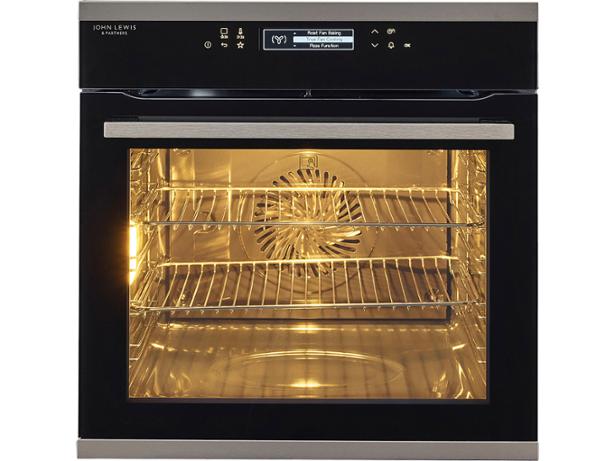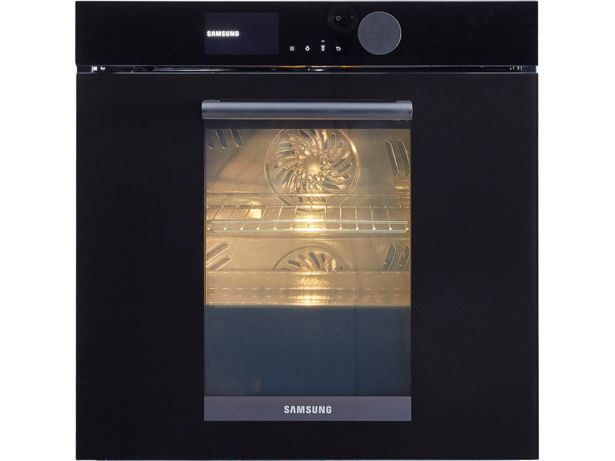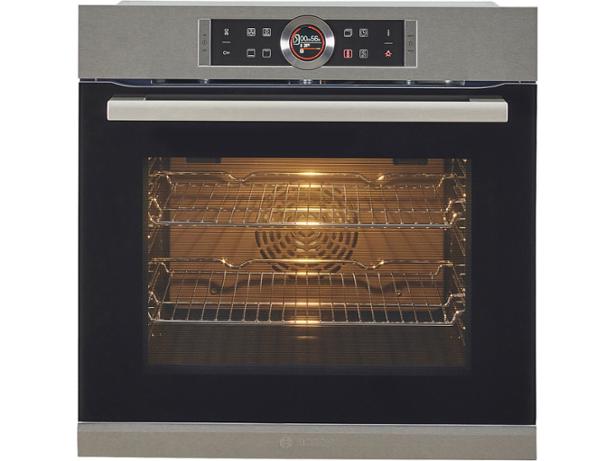Oven symbols and controls explained

Oven symbols can be obscure and if you don't know what they mean, you might not get the best cooking and baking results.
But most ovens tend to use similar symbols, so once you've learned what to look for (below), you should be able to navigate your way around most you come across.
You might also find our oven temperature conversion table handy.
For advice and recommendations when buying a new oven, see our guide to the best built-in ovens.
Fan oven

This symbol represents an oven fan with its own heating element. Heat comes from a circular element surrounding the fan at the back of the oven and is circulated by the fan.
Good fan ovens spread heat evenly, so whether you're cooking near the top, bottom, back or front you should get similar results. If your oven's heat distribution is poor, you may have to move your trays around to get even results.
A fan symbol on its own, or with horizontal lines above and below it, shows the fan is spreading heat from the upper and lower heating elements, rather than the back.
Fans are good for most types of cooking, particularly when you use more than one shelf. They also work well for roasting meat, where you want the meat to be tender on the inside and well done on the outside.
Upper and lower heating elements

Heat will be generated by elements in the top and bottom of the oven and is spread by natural convection. The fan doesn't come on.
A good option for single-shelf cooking of pastries or scones, or something substantial such as a large fruit cake. It also works well for roasting meat.
Lower heat element only

This means heat will come solely from the heating element at the bottom of the oven. The fan won’t be used to circulate the heat.
This setting is great for gently cooking stews and casseroles. It's also good for crisping up the base of a pizza or pastry case.
Fan with lower heat

Heat will be produced at the base but will be wafted around by the fan - great for keeping the top of a dish moist while the bottom gets nicely cooked.
It's a good option if you want to avoid the need for blind baking pastry on pies and quiches, and also works well for crispy pizzas.
Want to put your oven to best use? If you're looking for weekend ideas, see BBC Good Food's roast recipes. For cakes, bakes, biscuits and more, see BBC Good Food's baking recipes.
Full grill

Heat is being produced by the whole grill element. Some grills are designed to be used with the door closed, some need it to be open, so check what your oven's manual recommends.
Good grills will make sure all your food gets crisped or browned evenly, poor grills will give patchy results.
If you use the full grill, you’ll be able to cook a lot of food at once - a good choice for anything that sizzles, such as sausages and bacon. It can be handy for browning off meat, the top of a lasagne or for making a large round of toast.
Grill and fan

This shows the grill and fan are on at the same time. The fan spreads the grill’s heat, making it less fierce.
It's good for cooking through thicker pieces of meat or fish without heating the whole oven or burning the top.
Grill and lower heat

This shows the grill is being used in combination with the lower heating element and is a good option for pies, tarts or pizzas that need a crispy base and a browned surface.
Part grill

For half-grill settings, only one section of the grill element gets hot, so make sure your food is directly under this part.
Having the option to use half the grill is handy if you only want to cook a couple of sausages or brown a slice of cheese on toast.
Pyrolytic cleaning

Lots of ovens now offer high-temperature pyrolytic cleaning.
This program heats the oven to around 500°C, which incinerates burnt-on cooking grime. You can then just wipe off the ash left behind.
The symbols used by manufacturers for pyrolytic cleaning aren't consistent, but examples include a capital P, or a series of dots or diamond shapes that increase in size.
Defrost

Some ovens have a defrost setting, represented by a snowflake with a water droplet emerging from it.
This means the fan is on but no heat is produced, so no cooking takes place. The moving air defrosts food much more quickly than simply leaving it on the kitchen table - handy if you’re in a hurry to defrost some meat for dinner, for example.
Oven light

Your oven may have a separate light setting, meaning you can turn it on when the oven isn't in use - this makes it easier to spot grime when giving it a clean. With some ovens, the light comes on only when the oven is in use.
Plate warming

This represents the plate-warming function, which gently warms plates or other dishes to prevent food cooling too quickly when served.
Alarm

Set the alarm for your chosen time and you'll be alerted by buzzing or beeping when it’s time to check if your food is cooked.
Minute minder

Turn on the oven, put your food in and set the time you want it to cook for. The minute minder will switch the oven off once the time is up and give an audible beep or buzz.
Child lock

These are more commonly found on hobs, but some ovens also have a child-lock option. They generally work by pressing and holding a touch control for a few seconds to activate or deactivate the child lock. When the child lock is on, the oven will not respond to buttons being pressed or dials being turned.
Not a Which? member? You can still get free news and advice from our experts by signing up to our home and garden newsletter.


